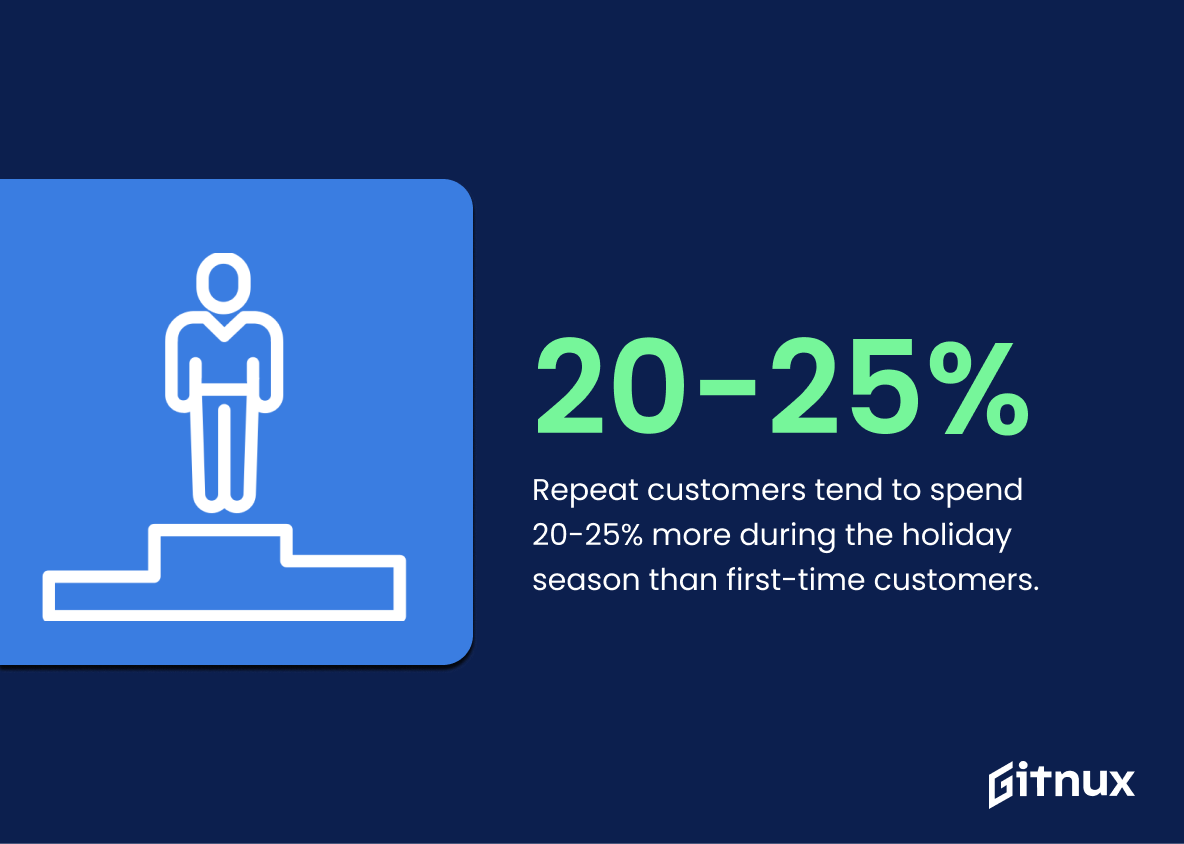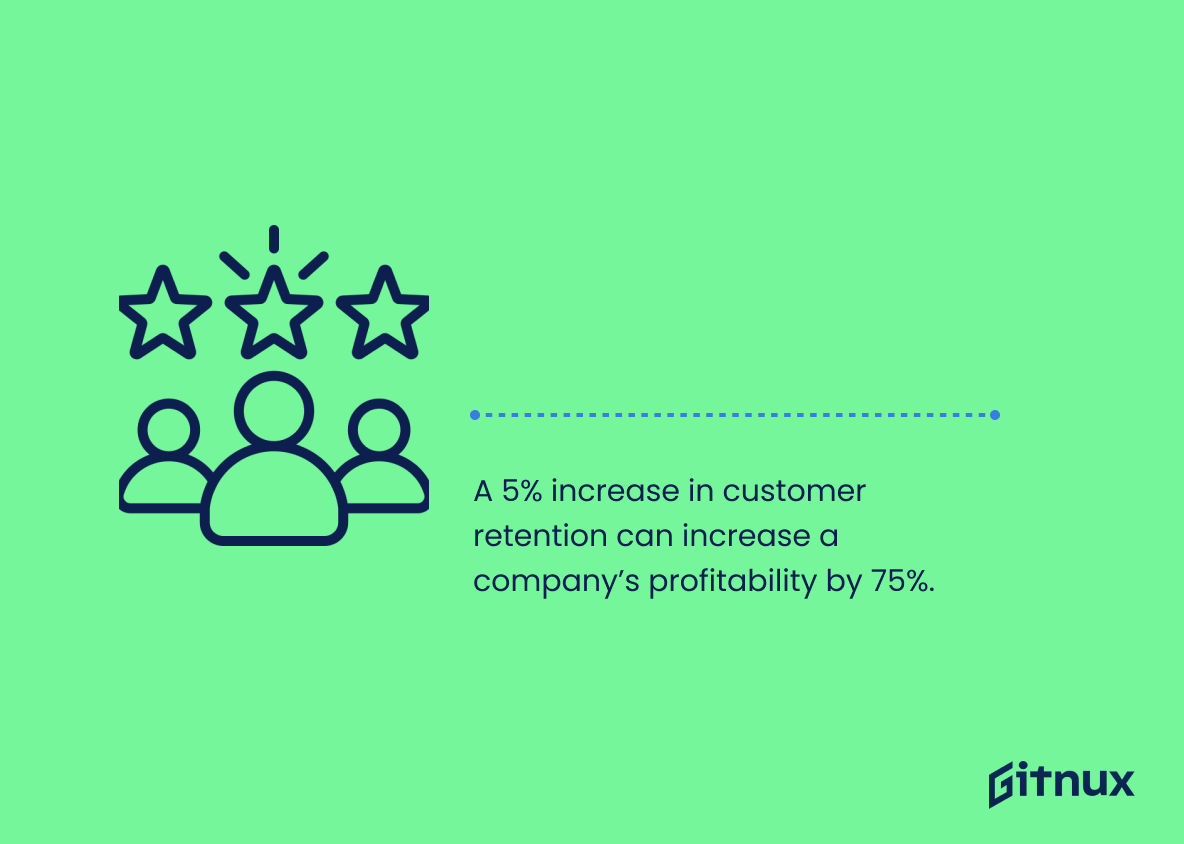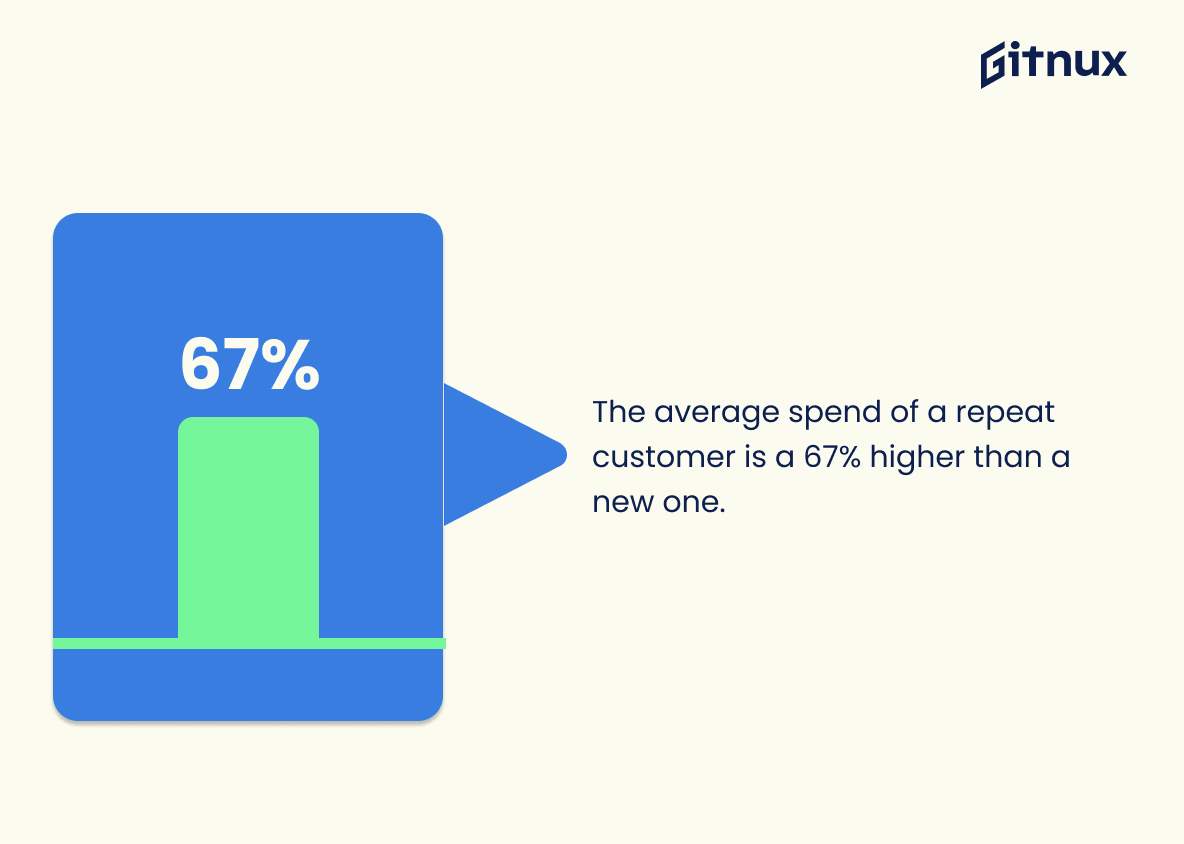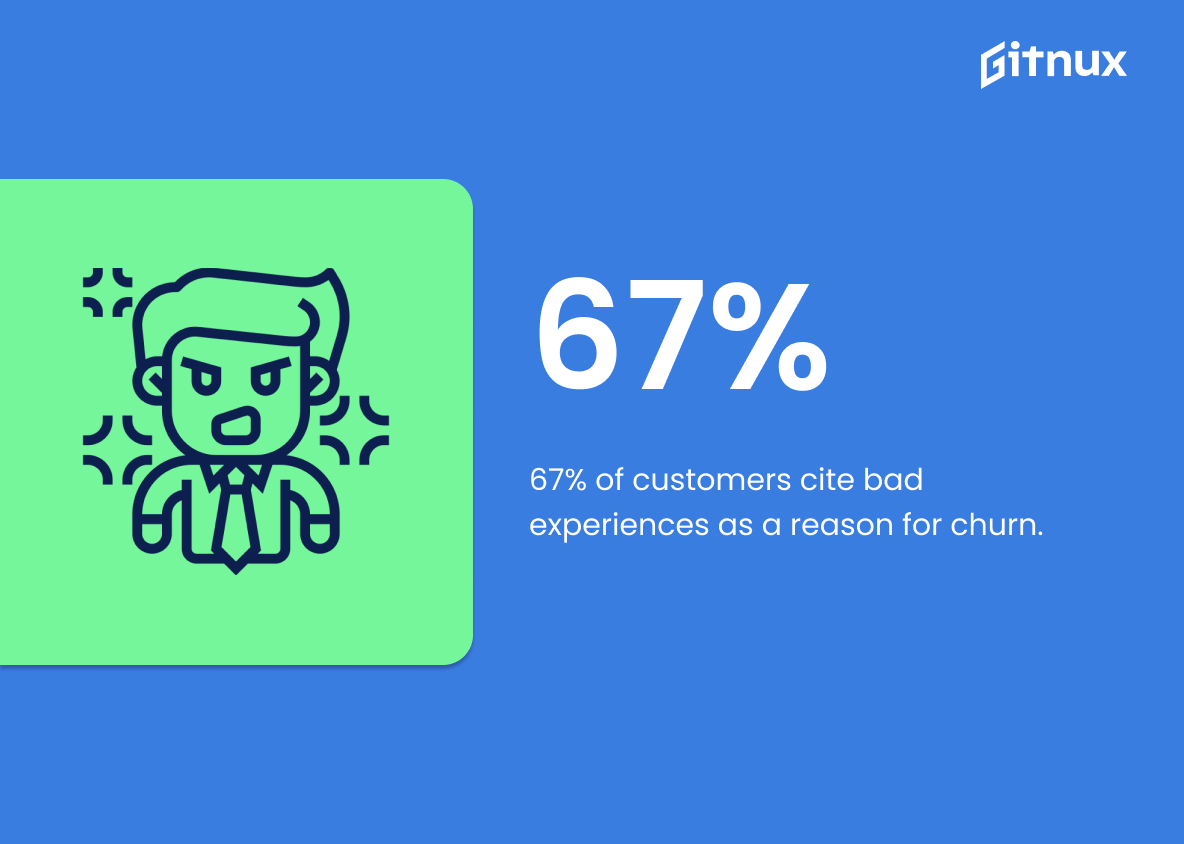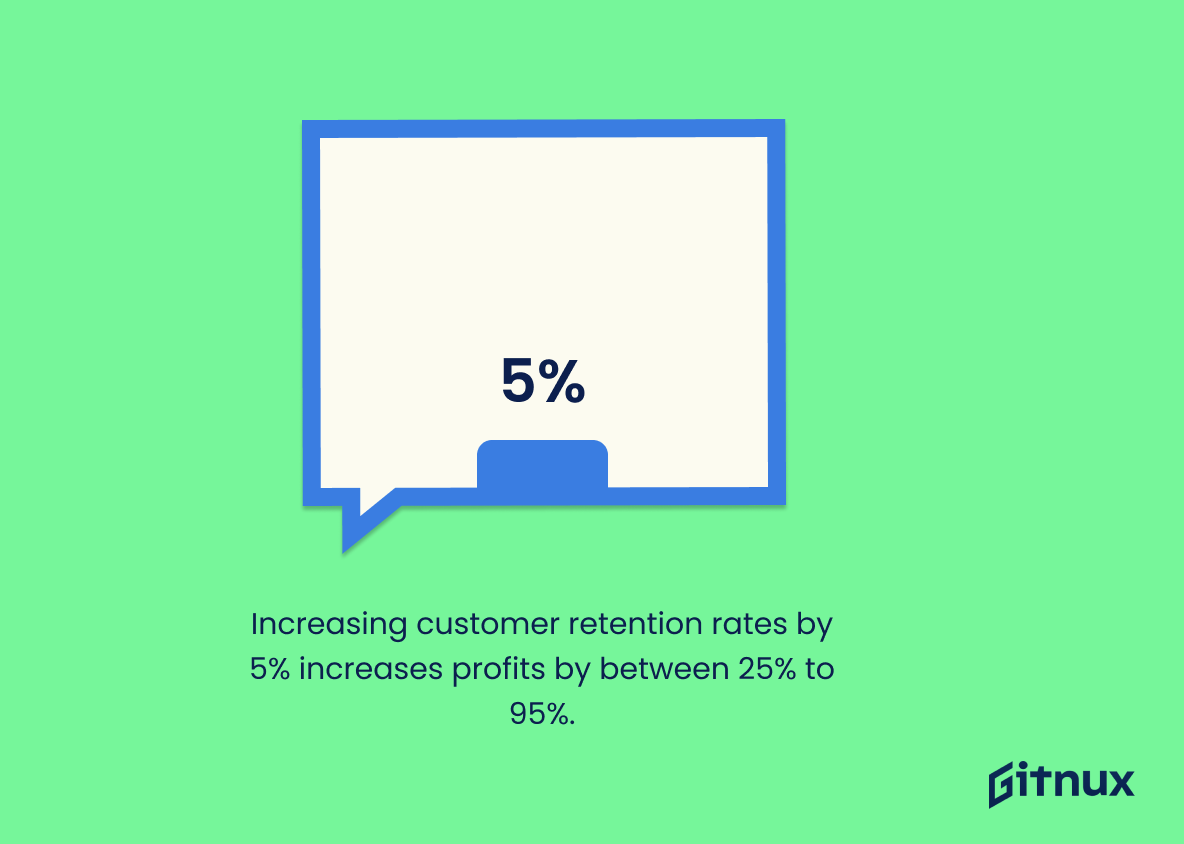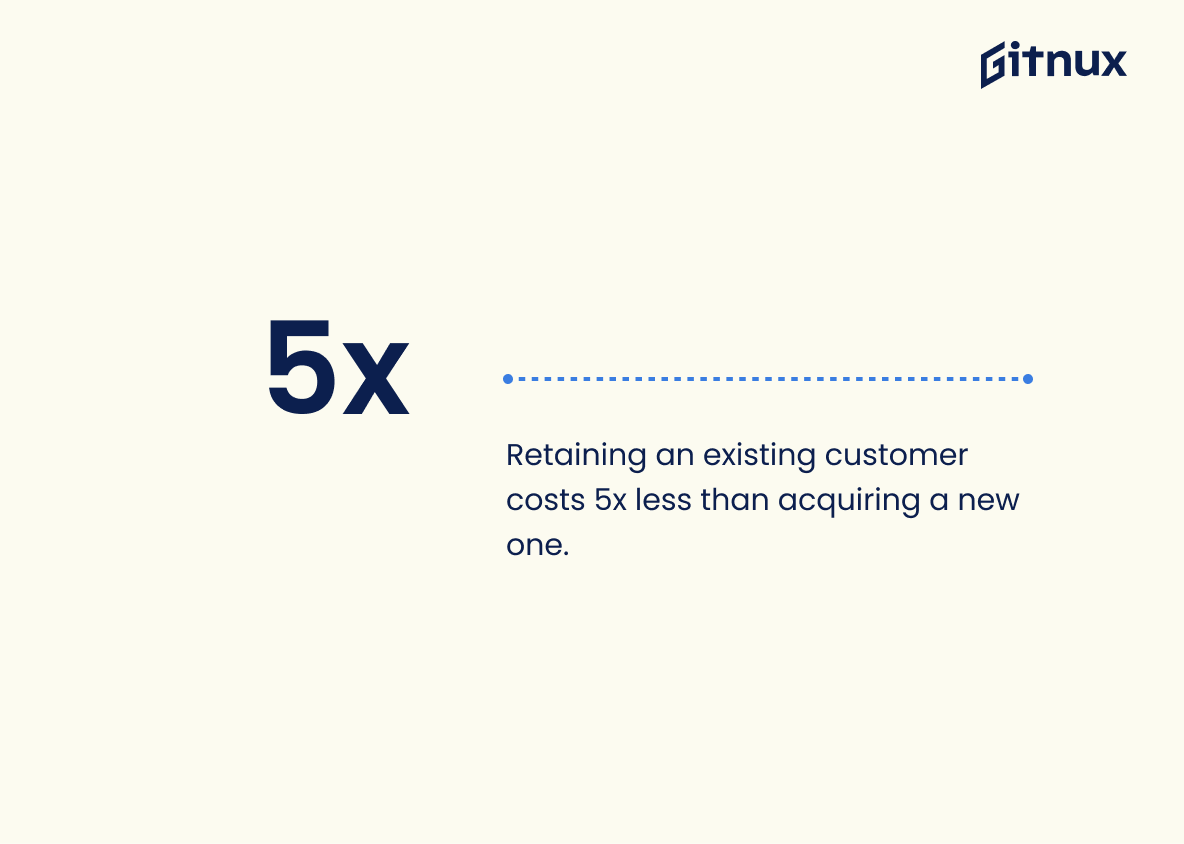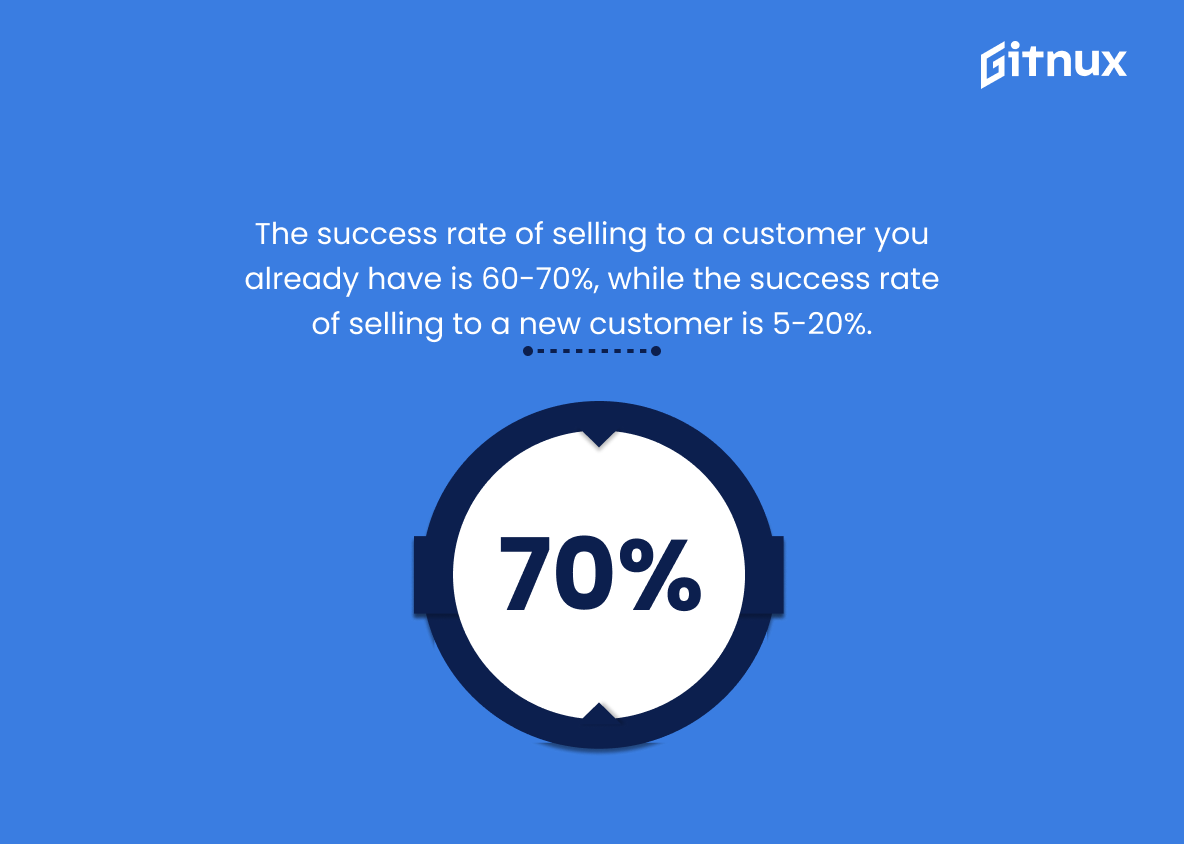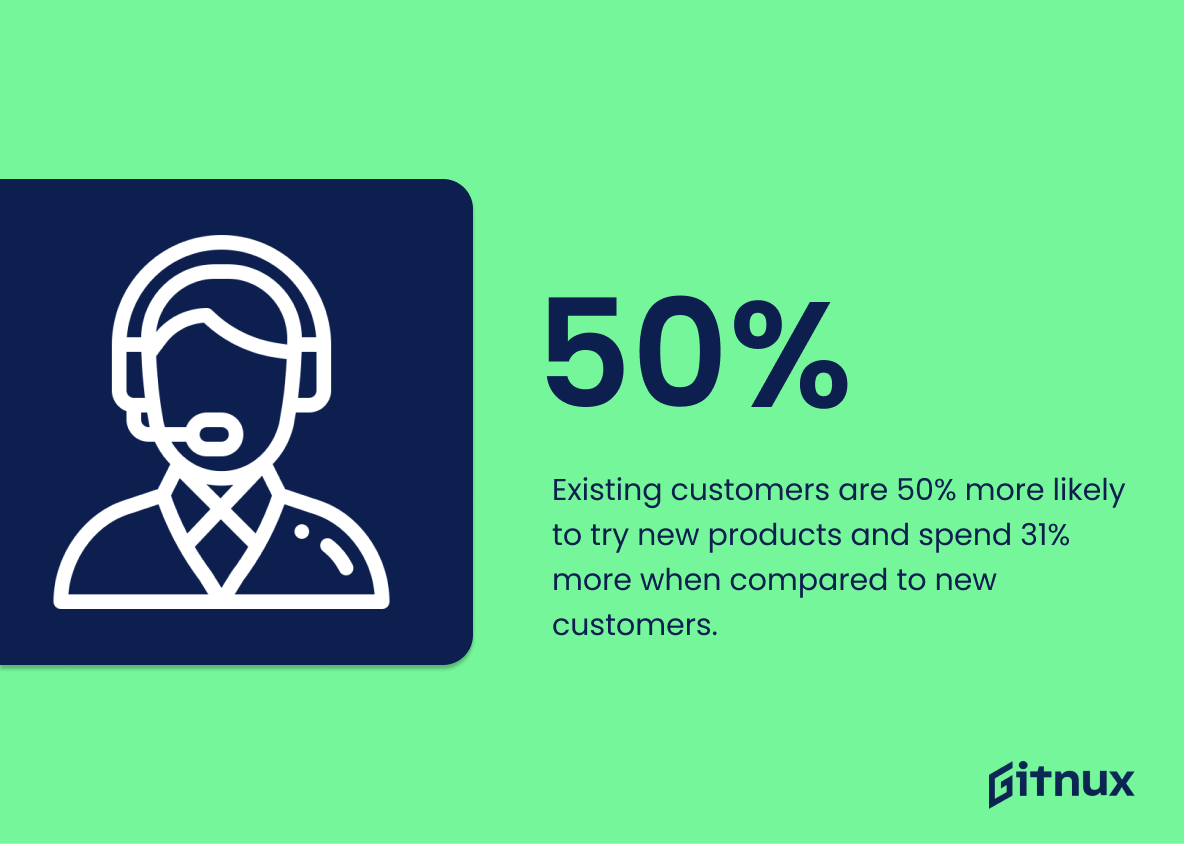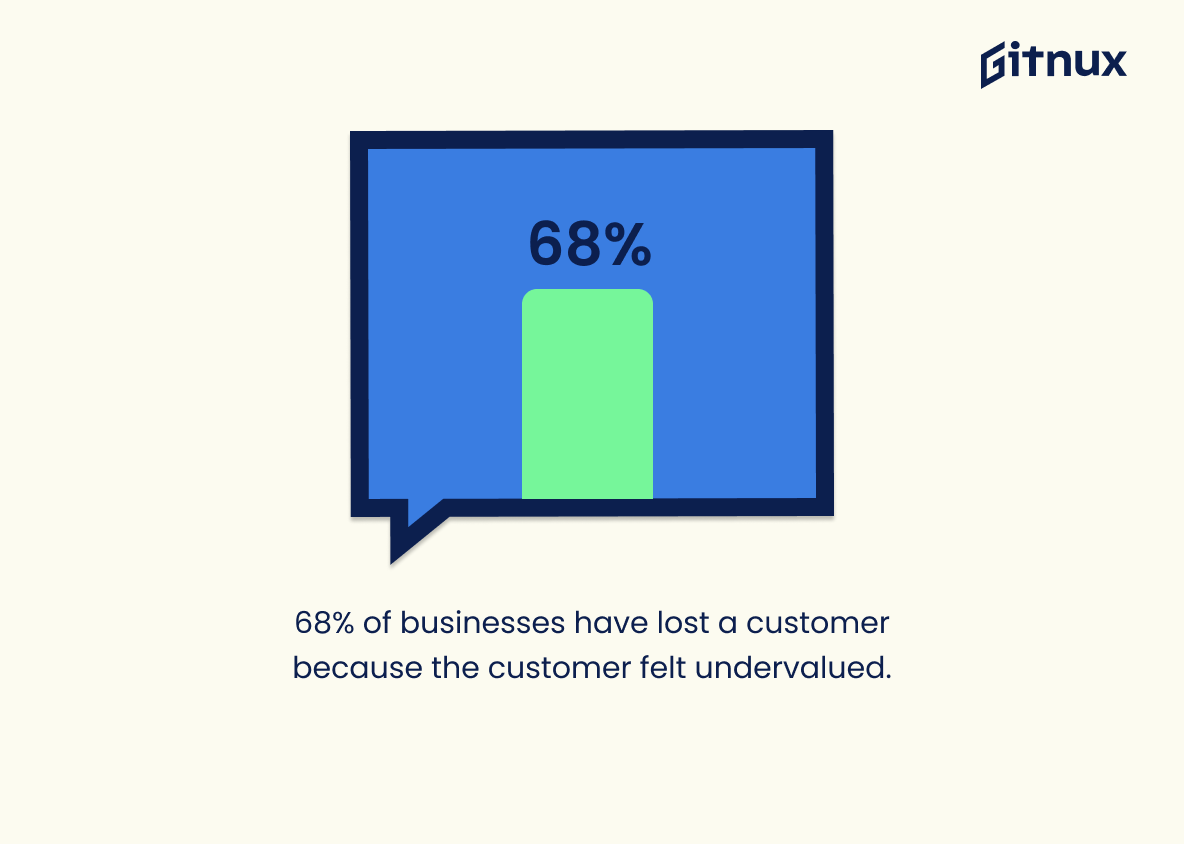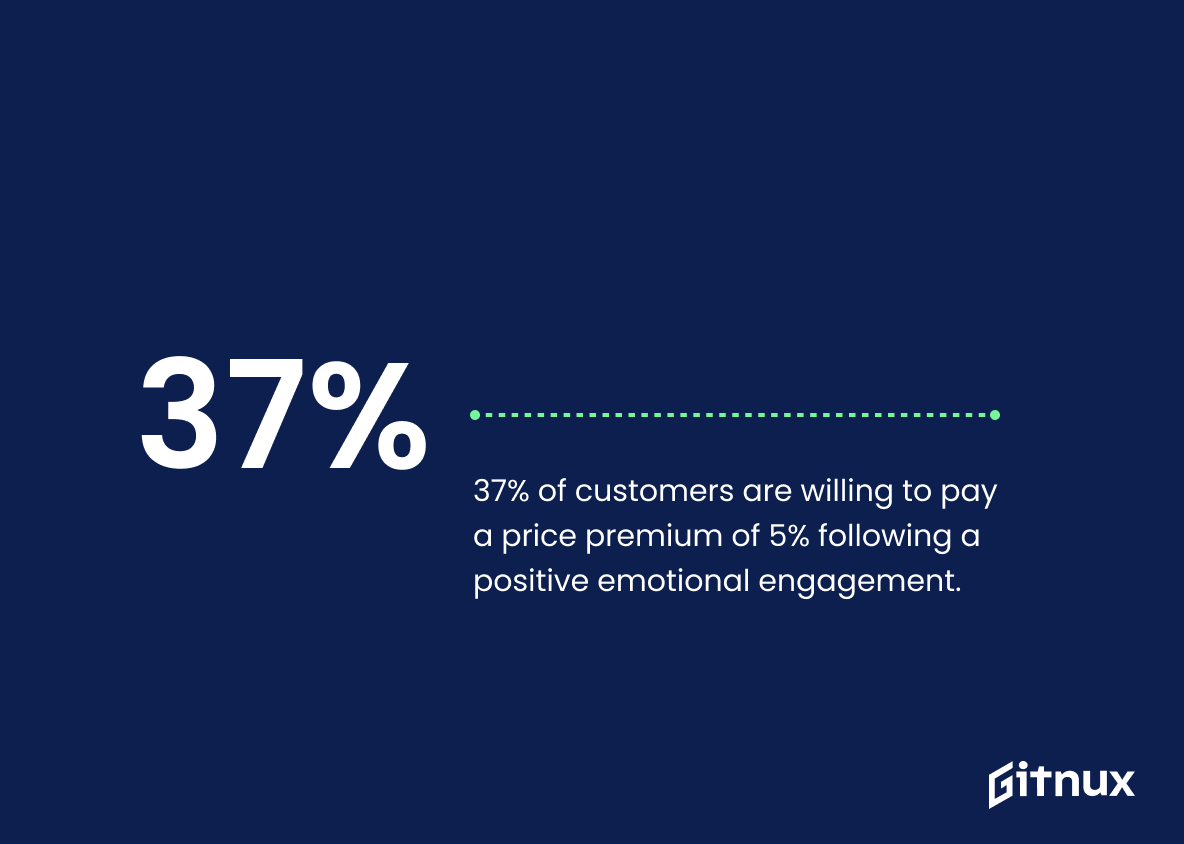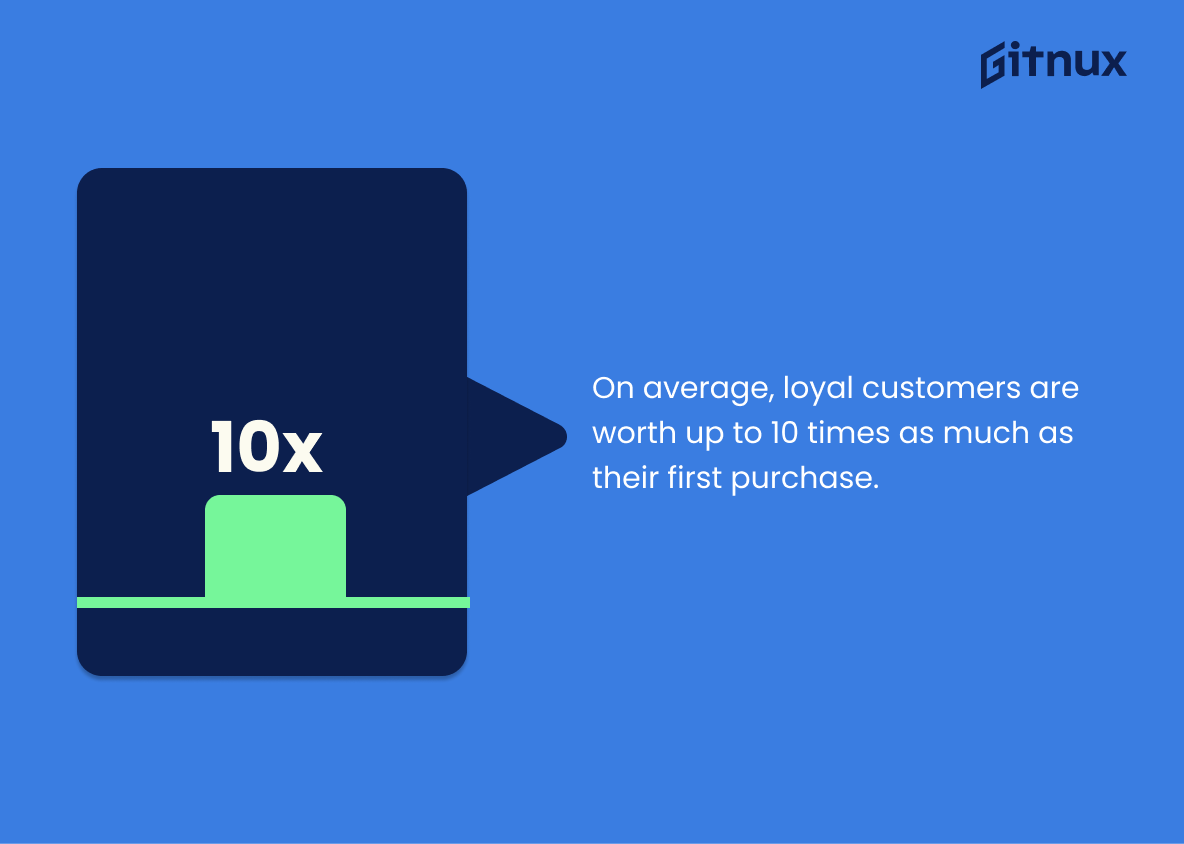In the world of business, accruing new customers may feel like the ultimate achievement, however, the real trophy goes to fostering returning customers. Their loyalty and trust in your brand do not just promise steady revenue but also testify to the quality of your goods and services. Welcome to our insightful exploration on ‘Repeat Customer Statistics’. This deep dive will expose you to fascinating facts, figures, and trends that underline the invaluable importance of repeat customers. We’ll unearth data that reinforces why businesses should focus on strategies that nurture customer retention alongside customer acquisition. So gear up as we navigate the vast landscape of compelling statistics that showcase the power and potential of repeat clientele. Enjoy the journey and reap the wisdom that can stimulate your business growth.
The Latest Repeat Customer Statistics Unveiled
Repeat customers tend to spend 20-25% more during the holiday season than first-time customers.
In the bustling realm of Repeat Customer Statistics, our shining beacon of insight comes from the observation that repeat customers tend to splurge 20-25% more during the festive holiday season compared to their first-time counterparts. This nugget of wisdom holds immense potential for businesses, as it uncovers a promising goldmine. Repeat customers, as this statistic suggests, aren’t just loyal buyers, they’re your enthusiastic holiday spenders. Therefore, businesses should prioritize nurturing these existing relationships. More energy invested here implies more holiday cheers for your revenue, and this statistic is the wind beneath your strategic sails. It tells you where to plot your course – invest in repeat customers and holiday seasons will shower you with golden rewards.
The probability of selling to an existing customer is 60-70%. The probability of selling to a new prospect is 5-20%.
Delving into the realm of repeat customer statistics, we find ourselves embracing the power of these figures – a spectacular 60-70% chance of selling to an existing customer, juxtaposed with a humble 5-20% of securing a sale from a new prospect. These striking revelations ignite a paradigm shift, making it vividly clear why businesses should ardently court customer loyalty.
In a world swamped with choices, these figures underscore the immense value of a familiar face. They accentuate a business principle as old as commerce itself – that relationships matter. They reveal why nurturing existing relationships, rather than solely chasing new ones, is instrumental in forming a successful and sustainable business strategy.
These numbers stand as silent heralds, screaming an essential business truth – that winning the loyalty of an existing customer is not just vital, but also far more achievable. They paint a compelling image of the ROI on customer retention versus acquisition, substantially tilting the scales in favor of repeat business.
In the high stakes game of keeping your business afloat and it ceaselessly moving forward, every decision counts. Having a statistic like this at your arsenal while crafting business strategies, blog posts, or sales pitches can be what differentiates a flourishing business from a struggling one. This statistic is not just a number, but a beacon guiding businesses through the complex labyrinth of customer acquisition and retention strategies.
A 5% increase in customer retention can increase a company’s profitability by 75%.
Drawing from the golden nugget of data that highlights a 5% boost in customer retention can spiral a company’s profitability by a whopping 75%, one can only marvel at the latent power of repeat customers. In the enchanting cosmos of commerce, this statistic is like a lighthouse, illuminating the path to sustained success and profitability. It distills the essence of why focusing on existing customers rather than solely attracting new ones is of paramount importance.
This statistic elegantly weaves an intricate tale of return customers and their profound impact on a company’s bottom-line. It crafts a compelling narrative, accentuating that a mere 5% hike in customer retention can unleash a torrent of profitability, often underestimated in its potential.
It reinforces the general truth: investing in customer loyalty and satisfaction, is not only a profitable strategy, but an essential one. In the context of a blog post on repeat customer statistics, this audacious affirmation serves as a fundamental cornerstone, painting an enticing portrait of potential profits tucked within your existing customer pool. So, for those looking to bolster their bottom-line, nurturing long-lasting relationships with current customers presents an efficient and often overlooked strategy.
The average spend of a repeat customer is a 67% higher than a new one.
Diving into the realm of repeat customer analytics, one revelation steals the spotlight – the spending power of a return shopper soars a whopping 67% higher than a new one. This intriguing statistic isn’t just a number, it’s a stark reminder that a familiar face brings along a significantly thicker wallet. This striking percentile uplift underlines the importance of going beyond acquisition and fostering customer loyalty. It’s not a game of numbers, but an intricate dance of nurture and retention. Shattering misconceptions about customer value, this statistic underscores the potent fact that you can extract more financial value from a customer who feels valued – transform them from one-time buyers to brand ambassadors.
32% of executives say that retaining current customers is a priority.
Delving into the nugget of wisdom ‘32% of executives view customer retention as a priority,’ gives us fascinating insights within the axis of Repeat Customer Statistics. It projects a beacon of understanding into the pulse of modern businesses, revealing how a third of executives place immense value on maintaining their current customer base. This underlines the importance of repeat customers in fortifying businesses’ backbone, substantiating the blog post’s idea that nurturing these relationships should not be a fleeting strategy but a foundational element in their business modeling. Such perspective hints at both the economic and relational benefits of investing in customer loyalty, thus shedding light upon the role repeat customers play in the interconnected matrix of commercial success.
67% of customers cite bad experiences as a reason for churn.
Diving headfirst into the vast ocean of repeat customer statistics, it’s impossible to overlook the towering iceberg that is ‘67% of customers claiming that bad experiences have fuelled their churn.’ Imagine it this way – if your business was a boat, almost two-thirds of your passengers are set to abandon ship, not due to a lack of appreciation for your products or services, but mainly due to unfortunate encounters. Keep in mind, in the world of business, losing customers has a domino effect – it not only reduces your client base but also paints a less appealing picture for potential customers. Ergo, focusing on improving customer experiences, taking this 67% into consideration, is akin to sealing the leaks in your business boat, ensuring smoother and safer voyages ahead. Through this lens, the statistic shapes up as a pivotal turning point for companies aiming to enhance their customer retention strategy, thereby sailing successfully in the competitive retail ocean.
Increasing customer retention rates by 5% increases profits by between 25% to 95%.
In the charismatic world of Repeat Customer Statistics, the truth lies in the magic of numbers. Imagine uncovering a secret passageway to increased profits, the key to this passage being a mere 5% increase in customer retention rate. This seemingly small percentage can lead to an astounding profit increase of 25% to 95%. Intuitively, we know repeat customers are the bedrock of a business. As they journey back, they bring more purchases, larger transactions, and invaluable word-of-mouth marketing. Now, we have the statistical evidence to back this instinct, to reveal in percentage terms the immense pot of gold waiting the other side of the 5% increase. It’s a beautiful dance of numbers, unveiling why focusing on customer loyalty doesn’t just create happy shoppers, but plays a pivotal role in inflating the bottom line.
Retaining an existing customer costs 5x less than acquiring a new one.
Imagine you are in a boat, constantly scooping out water to keep from sinking. Instead, wouldn’t it be more effective to just patch up the leak? This is where our statistic springs to action, suggesting that retaining an existing customer costs 5 times less than acquiring a new one. In the ocean of e-commerce, gaining a new customer is a triumphant feat no doubt—a testament to your marketing prowess. However, the real game-changer lies in repeat customers. After all, it’s more resource-efficient, cost-effective, and sustainable to keep your boat leak-free than it is to constantly bail out water. In our blogging context about repeat customer statistics, think of the existing customers as the fixed leak which propels your boat forward steadily, continually contributing to your business’s success. Retaining customers is much like maintaining your boat’s wellbeing—it’s not just about survival, it’s about sailing to the destination of progress and profitability.
80% of a company’s future profits will come from just 20% of their existing customers.
In the bustling arena of business, diving deep into the ocean of ‘repeat customer statistics,’ the axiom that ‘80% of a company’s future profits hinge on just 20% of existing clients’ emerges as a lighthouse guiding strategic decisions. Nestling at its core, this principle underpins the value of retaining existing customers and fostering brand loyalty. It foretells a compelling tale of how a loyal customer cohort, while being just a fraction of your total customers, can potentially fuel the substantial part of your profit growth engine. This vividly elucidates the financial significance of nurturing repeat customers, making their satisfaction an undeniable criticality. Armed with this insight, a business can recalibrate its methods, investing more in customer retention and loyalty programs, ensuring that this golden 20% remains happy, attached, and profitable.
The success rate of selling to a customer you already have is 60-70%, while the success rate of selling to a new customer is 5-20%.
Visualize the gleaming world of repeat customer statistics, painted by the data that clearly exhibits selling to an existing customer has a skyrocketing success rate of 60-70%. This is a towering altitude when compared to the humble 5-20% success rate for acquiring a new customer.
Now cast your mind to the reason why this vibrant statistic should take center stage in any blog post about repeat customer statistics. These numbers testify a compelling story of how fostering and nurturing relationships with existing customers could potentially lead to a richer crop of sales. Rather than chasing the elusive new customer, businesses may find more value nestled within their current customer base; a hidden treasure just waiting for the right strategy to unearth.
In the vivid tapestry of customer relationship management, this statistic dyes a bold streak, underlining the golden opportunity that lies in revisiting ‘known waters’, reinforcing the adage ‘Make new friends, but keep the old’. Hence, these statistics sparkle with potential – a guiding North Star in the quest for fiscal growth and customer loyalty.
Existing customers are 50% more likely to try new products and spend 31% more when compared to new customers.
In a dynamic realm like blogging, this insightful statistic acts as an infallible compass, highlighting the pronounced tendency of existing customers to embrace new products and splurge more when juxtaposed with new customers. Reinforcing the significance of loyal patrons in broadening a business’s revenue streams, it sends a resonating message to all pursuing sustained growth and profitability. Emphasizing the need for a well-targeted customer retention strategy, the statistic loudly reaffirms the age-old wisdom, “customer retention is wiser than acquisition.” For those crafting blog posts about Repeat Customer Statistics, it serves as a compelling narrative, urging them to unabashedly underscore the commercial virtue of repeat customers in driving business success.
68% of businesses have lost a customer because the customer felt undervalued.
Delving into the insightful statistic revealing that 68% of businesses have lost a customer due to them feeling undervalued, we uncover a prevailing issue that transcends industries. In a blog post specifically discussing repeat customer statistics, this piece of information amplifies the necessity for businesses to prioritize customer value. It serves as a wake-up call, reminding us that the role of emotion in customer retention cannot be undermined. Fundamentally, it highlights the correlation between perceived value and customer loyalty, reinforcing the sentiment that appeased customers are more likely to be repeat customers. Ultimately, this statistic reinforces the wisdom of the old adage, “Customer is King”, and underscores that, in today’s competitive business landscape, appreciating and making customers feel valued could be the differentiating factor for a business.
37% of customers are willing to pay a price premium of 5% following a positive emotional engagement.
In the bustling marketplace of today’s digital age, consumer loyalty remains elusive and priceless. The statistic stating that 37% of customers are ready to pay a price premium of 5% following a positive emotional engagement translates into an untapped goldmine for businesses. Within a blog post on Repeat Customer Statistics, this nugget of data shines bright, emphasizing the sheer power and potential of positive emotions in influencing customer behavior. If applied strategically, positive emotional engagement not only enhances customer satisfaction but also opens the door to a revenue boost, as a substantial proportion of customers do not mind paying a slight price premium. It paints a clear picture that investing in enriching the emotional journey of the customer can be a lucrative strategy to nurture repeat business, fostering sustainable growth and competitiveness.
On average, loyal customers are worth up to 10 times as much as their first purchase.
Diving deep into the core of this unique statistic, one can truly appreciate its weight in the world of customer retention. Picture this – you make a sale, the customer enjoys your product or service and is likely to return. Seems simple, right? But this simple return of the customer, often referred to as customer loyalty, has a profound impact on a business bottom line. The value of a first-time purchaser pales in comparison to the potential financial contribution of a loyal customer, which can be up to ten times greater than their initial purchase.
Imagine, a sea of ‘first-time purchase’ fish swimming in the revenue stream. They’re important, no doubt, they keep the stream flowing. But then, there are these rare, dazzling ‘loyal fish’, that are 10 times more valuable. They don’t just keep the stream flowing, they create ebbs and surges, meaningful increases in the money tide of a business. In the grand scheme of things, it’s these loyal customers that build up the foundation of revenues.
From a blog perspective breaking down Repeat Customer Statistics, this statistic is more than relevant, it’s a narrative enhancer, a startling revelation, a wake-up call to businesses everywhere. It drills home the significance of fostering customer loyalty, of shifting focus from one-off transactions to repeated engagements, from the short-term gains to the lush landscape of long-term profits. In essence, it’s a statistic that persuasively whispers, ‘invest in loyal customers, for they are your hidden goldmines’.
81% of consumers are more likely to continue doing business with brands that offer loyalty programs.
In the constellation of Repeat Customer Statistics, the unignorable luminary is that ‘81% of consumers prefer to keep engaging with brands with loyalty programs’. This shimmering stellar factoid provokes an immediate realization that loyalty programs no longer just provide an edge—they’re essential in retaining customers. This finding highlights an essential strategy businesses must adopt to lock in existing customers and not just always be in the hunt for new ones. It underscores the significance of customer loyalty incentives in the grand e-commerce chessboard, definitively reinforcing the adage that a bird in the hand is indeed worth two in the bush.
Just a 2% increase in customer retention has the same effect as decreasing costs by 10%.
Imagine planting a small sapling, expecting it to grow and flourish into a full-fledged tree. This visual largely encompasses the sentiment behind the compelling statistic stating that a mere 2% surge in customer retention equals a 10% cost reduction.
In your blog post about Repeat Customer Statistics, this statistic is like a golden thread, subtly weaving its importance throughout your content. It anchors the argument to the indisputable credibility of numbers and underscores the immense potential that lies in nurturing existing customers rather than continuously hunting for fresh ones.
The charm of this transformational statistic lies in its simplicity – small investments in customer retention can unleash significant cost savings. It gradually introduces readers to the inherent beauty in the business-parenting of loyal customers – a concept filled with potential cost reductions, enhanced reputation, and steady capital flows.
Ultimately, it serves as a critical reminder that customer retention isn’t just a feel-good term tucked away in marketing theory textbooks. It’s an actionable, high-impact strategy that is as potent in driving profitability as a well-timed cost-cutting measure.
Conclusion
Understanding repeat customer statistics is crucial for any growing business. They offer valuable insights into customer behavior, loyalty, and purchasing habits. By examining these metrics, businesses can tailor their strategies to maximize customer retention and optimize revenue generation. Nurturing relationships with repeat customers requires continuous effort and strategic planning but the payoff, as shown by the compelling statistics throughout this blog, is undoubtedly worth it. Moving forward, businesses should aim to interpret the data correctly, leverage it to their advantage, and implement customer retention strategies that foster loyalty and long-term growth. So, it is time to step up and put those repeat customer statistics to good use.
References
0. – https://www.www.smile.io
1. – https://www.www.customerthermometer.com
2. – https://www.www.groovehq.com
3. – https://www.www.forbes.com
4. – https://www.www.sellbrite.com
5. – https://www.www.bain.com
6. – https://www.blog.accessdevelopment.com
7. – https://www.www.whitehouse.gov
8. – https://www.www.annexcloud.com
9. – https://www.blog.hubspot.com
10. – https://www.www.smallbizdaily.com
11. – https://www.www.superoffice.com
12. – https://www.marketing.toolbox.com
13. – https://www.www.emarsys.com
